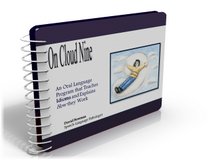Shared Book Reading

Shared book reading is a literature based language intervention that works well with children with language difficulty.
literature based intervention is an effecitve way of teaching students
language and literacy skills.
Speech-language pathologists who use this method don't actually teach reading skills, or decoding skills. Instead, they focus on the underlying language that underpins all literacy.
I use the shared book reading method often, and the benefits and the results I've had are very encouraging. What I like about the method is that text-based intervention has a strong contextual base.
This is important, because learning abstract language concepts within a familiar context helps to alleviate the problems associated with
decontextualized language.
Shared book reading's primary goal is for a clinician to use
a story book as a therapeutic tool to improve language knowledge and use.
This is done by using the text and illustrations in a picture book as the source of language stimulation. The language is essentially examined and parsed in detail using the text and pictures in a children's story book.
The number of language goals that can be gained from one passage in a well written children's book is quite amazing.
It's enjoyable to use text-based language intervention. The students tend to enjoy it too. That's because they
get to think and learn about literacy and language in a new way that is interesting to them.
Sequence of Text-based Language Strategies
Please follow the links for a more in depth discussion on shared book reading strategies.
-
Building Background Knowledge (Preparatory Set)
-
Shared Reading Activity (Clinician and student read book together)
-
Basic Comprehension Questions (Clinician asks a series of literal and inference type questions)
-
Language Arts Activities (Clinician uses a variety of language stimulation techniques to facilitate student's understanding of semantics, grammar, story grammar, syntax, and pragmatics.)
Language Therapy Technique Downloads
Shared Reading Technique 1
Right-click to download this PDF file here.
Shared Reading Technique 2
Right-click to download this PDF file here.
Recommended Sequence
Right-click to download this PDF file here.
References
DeKemel, K.P. (2003) Intervention in Language Arts: A Practical Guide for Speech-Language Pathologists. Butterworth-Heinemann.
Kaderavek, J & Justice, L.M. (2002) Shared Storybook Reading as an Intervention Context: Practices and Potential Pitfalls. American Journal of Speech-Language Pathology, Vol 11. 395-406.
Norris, J.A. (1991) From Frog to Prince: Using Written Language as a Context for Language Learning, Topics in Language Disorders. Vol 12, 66-81
Wallach, G.P. (2008) Language Intervention for School-Age Students: Setting Goals for Academic Success. Mosby Elsevier
Content Last Updated 8/11
Also, please sign up for the Language Dispatch newsletter. The newsletter provides essential monthly language intervention tips, techniques and information.
The information provided in the monthly newsletters is ideally suited to be used by speech-language pathologists, teachers and parents of language impaired students.
Once you've signed up to the Language Dispatch you'll also receive a new free Idioms ebook, On Cloud Nine.
The On Cloud Nine Program features 100 context based scenarios, and a multiple choice format to effectively teach this difficult figurative language concept.
The program is very easy to use and is yours free, once you've signed up to the Language Dispatch. The program is available as an Adobe pdf download.

Return from shared book reading to speechlanguage-resources home page



